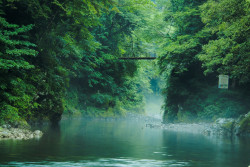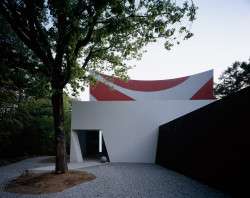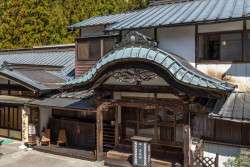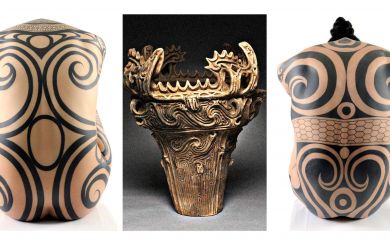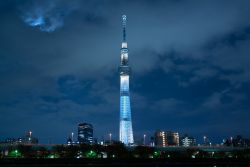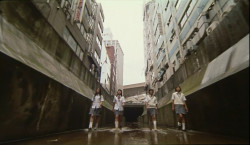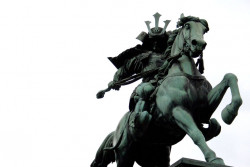
September 23, 2010
Hiking Tanzawa
Pristine nature and gorgeous views are only ¥2,000 away
By Metropolis
Originally published on metropolis.co.jp on September 2010

Photography by Jeremy Veverka
Feel the burn. Your calves certainly will as you relax in Tsurumaki Onsen after a long hike, but you’ll also experience the intense satisfaction of knowing that you escaped to one of Japan’s most scenic spots for somewhere in the region of ¥2,000 round-trip. Tanzawa’s proximity, variety and beauty make the mountain range in western Kanagawa one of the area’s best-kept getaway secrets. It offers a broad range of outdoor activities: casual day hikes for couples, camping by the river for families, mountain huts for an offbeat overnight experience, and hardcore treks for the adventurous—not to mention the region’s onsen.
The choices begin once you arrive at the trailhead in Okura: if you feel like a relaxed weekend of camping by the river (perhaps with a bottle of Scotch), the nearby camping area in Hatano Togawa Prefectural Park offers facilities and amenities like restaurants, barbecue pits (¥2,000-¥2,500), toilets and a sports center. For exercise and magnificent views, there are several day-hike options, ranging from two- or three-hour jaunts to nearby waterfalls, to full-day hikes to the stunning peaks of Tonodake and Sannoto.
Be warned that the trails are very steep in some places—they tend to go straight up the ridge rather than along switchbacks—so it’s a good idea to bring decent hiking shoes and a walking stick. Also, there are no natural sources of drinking water once you get higher up on the mountain, meaning you’ll either need to bring your own or buy it at the various huts along the way (where you can take comfort in the knowledge that it’s been hauled up the slopes by the area’s professional mountaineers). On the plus side, the trails are very well marked, generally well maintained, and it’s hard to get lost.

If you’re up to a longer trek to Mt. Tanzawa itself, and perhaps Hirugatake—the range’s highest peak, at over 1,600m—you’ll need to stay somewhere in the mountains for the night. Almost every peak has a hut with dorm-style sleeping on tatami and, if you call ahead, some will be able to screen off areas for privacy. The huts can provide an early dinner and breakfast, as well as beer and sake after a long day’s hike—and, yes, those have been hauled up on the backs of dedicated ojisan, too. If ¥5,000-¥7,500 per person for room and board seems high, you’ll understand just how demanding the supply route is once you get there.
The next day, you can continue down off the range either by looping back to Okura, out through Nishi Tanzawa—where a rotenburo awaits at the nearby Wellcamp—or Tono. If you plump for the latter option, be warned that the buses are pretty infrequent.
Wild camping isn’t allowed in much of the national park that encompasses the Tanzawa hiking trails—the only campsite on this side of the mountain is at the Okura Kogen Yama no Ie, about one hour up from the trailhead. Despite the relatively low elevation, there are some decent views of Hadano City from here, and the site is less crowded than those by the river. There’s also piped-in drinking water available for ¥20 per person—this is as high as the pipe goes. The forested location provides a good option for people yearning for a more authentic camping experience. Just remember to bring your own gear.
Trip Tips

Getting there is easy
Take the Odakyu line from Shinjuku or Ebina to Shibusawa station (about 1hr, 10min), then bus #02 to Okura (15min)
Be prepared
Check satellite maps and transportation schedules before you go, bring a compass and pick up some maps and brochures at the visitor’s center in Okura
Start early
If you’re planning a day hike, start as early as you can (i.e. the first train). If you’re planning an overnighter, leaving a little later should be fine
Pack light
The trails are steep and you’ll need water (1 liter= 1kg), so pack as lightly as possible—but don’t forget a jacket or sweater for the cool mountain evenings. Avoid large, heavy bags and bring light, dry foods for snacks
Bring water
A person needs about 3 liters of water for a full-day’s hike. You can get by bringing less, as long as you have some cash to buy water along the way
Take a walking stick
Descents can be especially hard on the joints; a walking stick (or two) can really take off the stress
Call ahead
Although huts accept hikers without reservations, it is courteous to call ahead. Sonbutsu Sanso (Tonodake): www.cnet-sb.ne.jp/sonbutu. Miyama Sanso (Mt. Tanzawa): http://miyamasansou.web.infoseek.co.jp.
